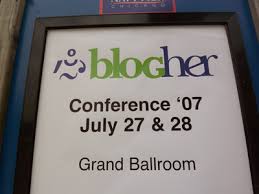
When I was a kid, a familiar black and yellow flower-power poster hung above my mother’s dresser. It said: “War is Not Healthy for Children and Other Living Things.â€
Despite this simple message, we’re still fighting. U.S. troops are stationed in Iraq, Afghanistan, and elsewhere around the globe. By September, total war-related federal spending since 2001 will come to an astounding $915.1 billion.
But what happens after war? More to the point, what happens when women put down their guns and come home? Shawna Kenney reviews the gripping new book, The Girls Come Marching Home — a chronicle of women’s lives after war, penned by author Kirsten Holmstedt.
The Girls Come Marching Home
The very idea of women serving in military combat is controversial. Critics fear a “feminized†and “civilianized†U.S. military. But while pundits debate, the reality is that female American soldiers serve in infantry and support positions in Afghanistan and Iraq every day. Author Kirsten Holmstedt captured some of these women’s voices from the battlefield in her first book, Band of Sisters. Holmstedt returns this year with round two: The Girls Come Marching Home: Stories of Women Warriors Returning from the War in Iraq (Stackpole Books).
The 18 soldiers profiled represent all branches of the armed forces, themselves a multicultural sampling of courage and humanity. Without being overly “rah-rah†or “hooah†for war, Holmstedt details the triumphs and struggles of military women returning from combat as they reclaim roles as mothers, daughters, sisters, service members and civilians while struggling with physical wounds, post-traumatic stress disorder, survivor’s guilt, and sexual assault.
All opinions about today’s wars aside, The Girls Come Marching Home is a must-read for anyone concerned about women or war. Gunfire, IEDs, child soldiers, racism, sexism and death are shown as part of wartime routine, with people in the armed forces making split-second decisions no human should ever have to make or imagine.
The most disturbing stories here depict an inept Veteran’s Administration, failing our military (men and women) left and right. Most touching was the author’s postscript, where she reveals the secondary trauma she experienced while researching the book. Flying in the face of military training, Holmstedt urges vets to believe that “it takes courage to be vulnerable†and that “counseling isn’t for the weak.†Holmstedt encourages all who need help to seek it.
The Girls Come Marching Home boldly continues the women-in-combat conversation. Here’s hoping that Holmstedt’s personal sacrifice for such a detailed account of women’s post-war stories will serve many for years to come.
 Shawna Kenney is the author of Imposters (Mark Batty Publisher) and the award-winning memoir I Was a Teenage Dominatrix (Last Gasp). Her work has appeared in the Florida Review, Juxtapoz, Swindle Magazine, Veg News and Transworld Skateboarding, among others. She teaches online creative writing workshops for UCLA Extension and lifesabitchbooks.com and serves as Language Editor for Crossing Borders.
Shawna Kenney is the author of Imposters (Mark Batty Publisher) and the award-winning memoir I Was a Teenage Dominatrix (Last Gasp). Her work has appeared in the Florida Review, Juxtapoz, Swindle Magazine, Veg News and Transworld Skateboarding, among others. She teaches online creative writing workshops for UCLA Extension and lifesabitchbooks.com and serves as Language Editor for Crossing Borders.
 Oh how I wish I could have been there!
Oh how I wish I could have been there!


 I loved reading
I loved reading  Do check out
Do check out  It’s hard for me to believe it, but it’s been 20 years since I first visited the
It’s hard for me to believe it, but it’s been 20 years since I first visited the  Since I was busy puking my guts out this morning (month 6! when will the nausea end?!), Marco filled in for me over at
Since I was busy puking my guts out this morning (month 6! when will the nausea end?!), Marco filled in for me over at  Writer Rebekah Spicuglia recently guest blogged for
Writer Rebekah Spicuglia recently guest blogged for 